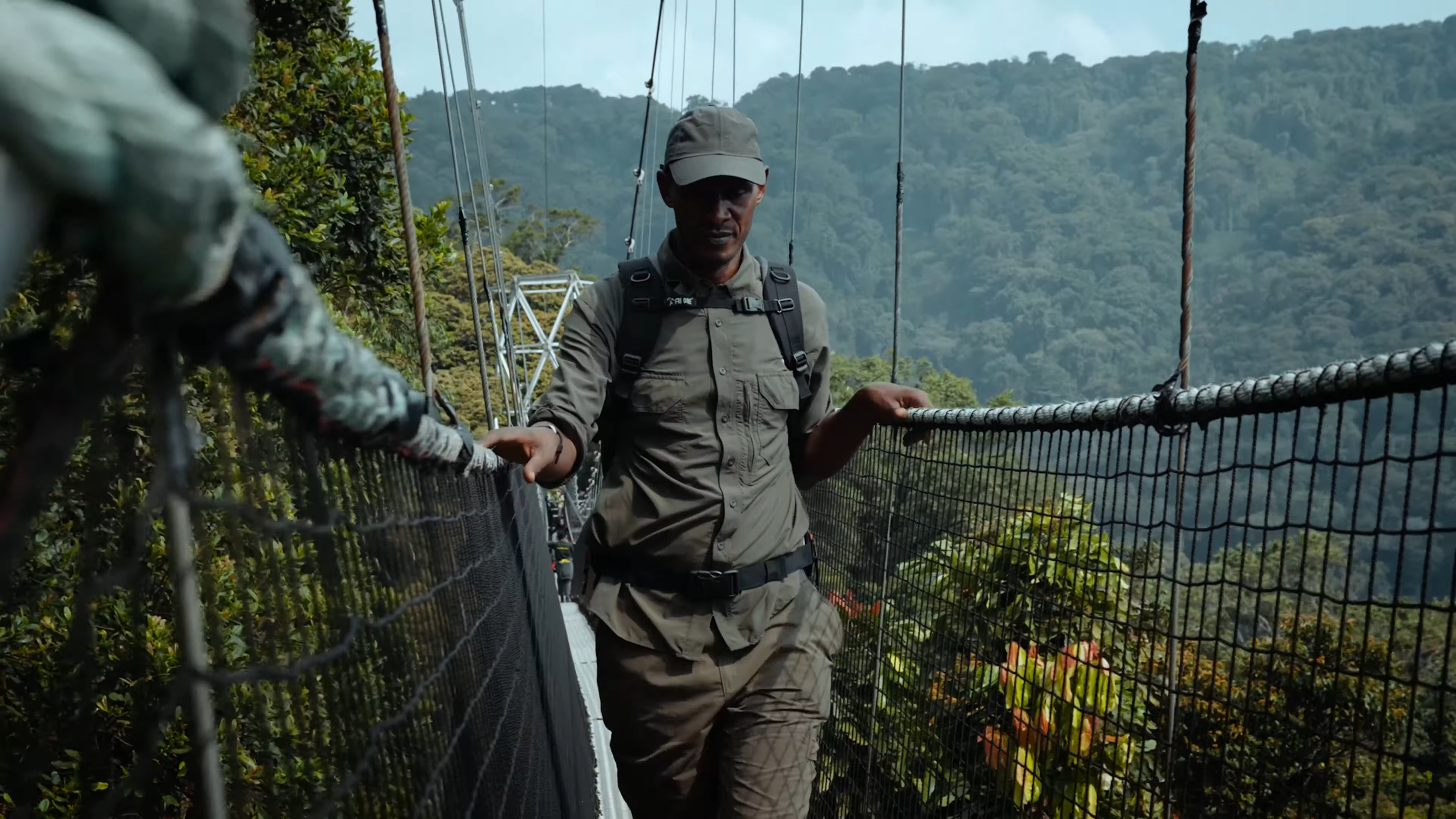All you need to know about Rwanda: Facts | History | Genocide
Facts
About Rwanda: Rwanda is an East African country situated on the eastern rim of the Albertine Rift, which is a western extension of the Great Rift Valley. This small, landlocked country is primarily known for its stunning natural beauty and unique wildlife. It is frequently referred to as ‘the Land of a Thousand Hills’ because of its hilly terrain.

Rwanda Safaris|Canopy walks
Rwanda is known for its five volcanoes, 23 lakes, and numerous rivers. Its mountainous topography is a result of its location on the eastern arm of the Albertine Rift Valley, which is part of the Great Rift Valley that spans over Africa from the Red Sea to Mozambique. The country boasts three main conservation areas, namely Volcanoes Park, Akagera Park, and Nyungwe Forest. Each of these conservation areas protects a unique ecosystem and a combination of large mammals.
Akagera National Park is home to a typical savannah fauna dominated by a variety of antelopes, zebras, buffalo, giraffes, the aquatic hippopotamus, and plains predators such as lions, leopards, and spotted hyenas. The Volcanoes National Park is renowned as the best place in the world for tracking mountain gorillas, while Nyungwe Forest National Park offers visitors a good chance to view chimpanzees and 400-strong troops of colobus monkeys, which are the largest arboreal primate troops in Africa.
Rwanda is a year-round destination that can be visited at any time of the year. The long dry season, which runs from June to September, is the best time for tracking gorillas and hiking in Nyungwe since the ground tends to be dry underfoot, and the chances of being drenched are minimal. The wettest months are March and May, but one advantage of travelling during the rainy season is that the scenery is greener, and the sky is less hazy (at least when it is not overcast), which can be advantageous for photographers. The rainy season is also the best period to track chimpanzees in Nyungwe, while November to March is the best time for birdwatchers, as resident birds are supplemented by flocks of Palaearctic migrants.
Rwanda is a paradise for birdwatchers, with an incredible 670 species recorded in an area that is smaller than Belgium and has less than half the land surface of Scotland. Prime bird-watching destinations include Nyungwe Forest National Park (with 275 species, including numerous forest rarities and 24 Albertine Rift endemics) and Akagera National Park (which is home to Savannah birds, raptors, and water birds). Almost anywhere in the country can prove rewarding to birdwatchers, and an hour in the garden of the capital’s larger hotels is likely to throw up a variety of colourful robin chats, weavers, finches, flycatchers, and sunbirds.
Rwanda has a diverse and unique landscape, with much of its 26,338 km2 impressively mountainous. The highest peak is Karisimbi (4,507m) in the volcanic Virunga chain, which is protected by the Volcanoes National Park. Lake Kivu is the largest water body, but there are numerous other lakes, including Burera, Ruhondo, Muhazi, and Mugesera, some of which have erratic shapes following the contours of the steep mountains that enclose them.
In conclusion, Rwanda is a unique and diverse country with stunning natural beauty and unique wildlife. It is an ideal destination for adventure seekers, birdwatchers, and nature enthusiasts looking for a one-of-a-kind experience.
Rwanda Genocide
Genocide involves the intentional extermination of a large group of people, typically belonging to a specific ethnic group or nation, and is marked by widespread murder. It often begins with the desire of one racial or religious group to eliminate another. Rwanda has experienced two significant genocides, occurring in 1959 and 1994.
Rwanda’s population historically comprised three ethnic groups: the Hutu, Tutsi, and Batwa.
The genocide of 1994 in Rwanda was preceded by the election of Juvenal Habyarimana, a Hutu, as president in 1978. Following a period of peace lasting 12 years, President Habyarimana was assassinated during a plane journey. The identity of the individuals who fired the surface-to-air missile remains unknown, but it is suspected that rebels from minor tribes were behind the act. Approximately an hour after the assassination, the Presidential Guard and the government’s military forces commenced the slaughter of Tutsi and moderate Hutu civilians, initiating the genocide.
Rwanda Genocide Special: 25 Years Later
The aftermath of the 1994 Rwanda Genocide left deep scars on the country, with devastating effects that continue to resonate today. Families were torn apart, communities were shattered, and infrastructure was ravaged. Women and children, particularly, bore the brunt of the tragedy, facing immense challenges and hardships.
The genocide, which spanned 100 horrific days, resulted in the loss of countless lives, with over a million Tutsis and moderate Hutus brutally killed. The survivors, many of whom witnessed unimaginable atrocities, are still haunted by the trauma they endured. The mental and emotional toll on individuals is profound, leading to widespread mental illness and persistent anguish.
Children, in particular, have been severely impacted, with a significant increase in orphans who struggle to access education, healthcare, and necessities. Many of these orphans are forced to take on adult responsibilities, perpetuating a cycle of poverty and hardship.
Furthermore, the destruction of infrastructure, including schools, hospitals, and homes, has hindered the country’s development and recovery efforts. The increased number of AIDS victims, stemming from the brutal acts of rape during the genocide, has further compounded the humanitarian crisis.
The plight of widows, who lost their husbands during the genocide and subsequent conflicts adds to the social and economic challenges faced by Rwandan society. These women, often lacking education and resources, struggle to provide for their families and secure a better future.
The legacy of the genocide is not just a chapter in history but a harsh reality that continues to impact Rwanda today. Efforts to rebuild, heal, and support the survivors are ongoing, but the road to recovery remains long and arduous. Visiting genocide memorial sites serves as a sombre reminder of the atrocities committed and the collective responsibility to prevent such horrors from happening again.

